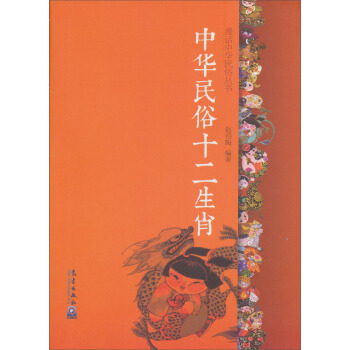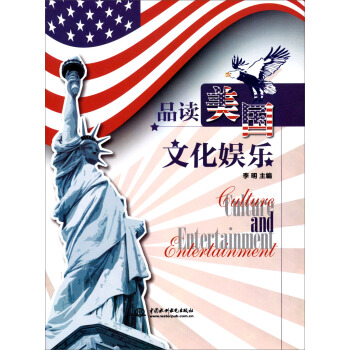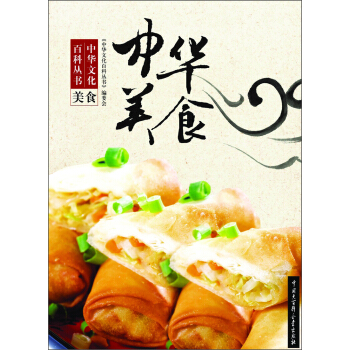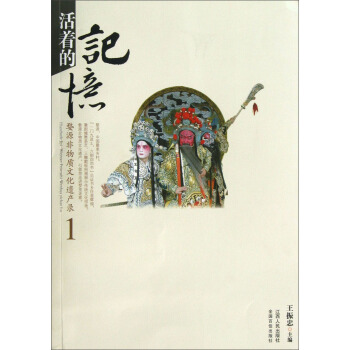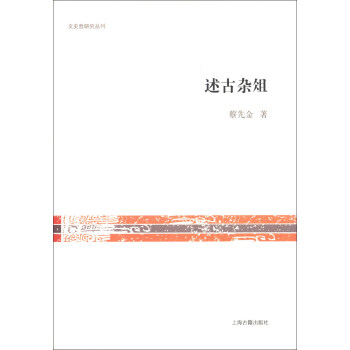![千字文(中英) [Tales From The Thousand Character Classic]](https://pic.tinynews.org/10678820/58d13f03Nef89d35c.jpg)

具体描述
内容简介
《千字文》是南北朝时梁朝人编写的,4个字一句,共250句,1000个字,所以成为“千字文”。本书根据《千字文》,精选了一些广泛流传的故事,以简短而生动有趣的方式讲述出来。
The Thousand Character Classic was compiled by a man of the Liang Dynasty. With four characters in each sentence, there are 250 sentences and 1000 characters in the book. Due to this reason, the book is titled the Thousand Character Classic.
内页插图
目录
Contents
目录
传说故事
Legendary Tales
历史故事
Historical Tales
美德故事
Tales of virtue
人才故事
Tales of Talents
《千字文》
精彩书摘
嫘祖养蚕制衣
原文:
乃服衣裳
故事:
相传黄帝时代的人们还发明了养蚕、编织丝绸、缝制衣服的方法,而这些工作,是在黄帝的妻子嫘(l9i)祖的带领下完成的。
在黄帝庆祝战胜蚩(ch~)尤的盛大聚会上,来了许多嘉宾,其中一位是少女变成的女蚕神,她向黄帝献上了一束洁白光亮的细丝。当时人们已经懂得加工动物的皮毛、树皮里的纤维等来制作衣服,但蚕丝这么美丽的材料,人们还是第一次见到。聪明能干的嫘祖拿到这蚕丝之后,很快以她灵巧的双手织成一块又轻又软的绢,用它给黄帝做了漂亮的礼服和礼帽。
当时,嫘祖带领一些人,负责为部落里的人们制作衣服,有人负责做帽子,有人负责做衣服,有人负责做鞋子。为了获得做衣服的材料,嫘祖带着人每天辛苦地剥树皮、纺麻网、加工动物皮毛。
见到蚕丝之后,嫘祖觉得这是很好的衣料,可是女蚕神所吐的丝是有限的,怎样才能源源不断地获得蚕丝呢?她向蚕神详细了解蚕的习性和蚕丝的来历,知道蚕喜欢吃一种叫桑树的叶子,于是决定找到这种树,以便人工养蚕。
嫘祖带领部落里的女性到处寻找,一种树一种树地辨别。工夫不负有心人,她们终于发现一片桑树林,远看去,树上好像结满了雪白的果实。嫘祖观察发现,那雪白的果实其实是蠕动的蚕虫口中吐出的细丝绕织而成的圆壳,叫作“茧”。她把茧带回去,把它们放在水里煮,然后把木棍伸进去搅拌,结果抽出了一根根像头发那样细的白丝线。
在嫘祖的建议下,黄帝下令让人民大量种植桑树,为蚕提供了源源不断的叶子。而嫘祖自己则开始亲自养蚕。经过很多次尝试,她终于掌握了养蚕、获得蚕茧、将蚕茧加工成丝线的一整套方法。这些经她之手生产出的丝线,与女蚕神所献的丝一样美丽光洁。嫘祖非常高兴,带领妇女们整天忙着抽丝、织出丝绸,然后为大家裁制漂亮的衣服。从此,养蚕、织布成为中国女性最主要的工作,而男性则负责狩猎和耕种粮食。
有了合适的衣料,嫘祖又开始研究如何更好地利用它们。她认为,应该将上衣和下身穿的衣服区分开来;另外,身份地位不同的人,应该穿不同的衣服,这样就可以很容易地将他们区分开来。
此后,嫘祖为推广蚕桑事业,教更多的人学会养蚕、治丝、织绢,到处奔走忙碌,最终病逝在路上。作为最早的养蚕人,她受到后世人们的尊敬,成为养蚕行业崇拜的女神。在古代,每年春天,中国皇帝都要模仿神农举行耕种仪式,而皇后则模仿嫘祖举行养蚕仪式。
由于嫘祖等人的发明创造,古代中国被称为丝绸之国。有了丝绸,才有了后来闻名世界、影响深远的“丝绸之路”。
Lei Zu Raises Silkworms and Weaves Cloth
Legend has it that other inventions were made by humans during the era of Huang Di, such as how to weave silk into fabrics and sew the fabric into clothing. People say that these things were accomplished under the leadership of Huang Di’s wife, Lei Zu, or Ancestress Lei.
When Huang Di held a victory celebration commemorating his triumph over Chi You, among the many guests was a young woman who was actually the goddess of silk, transformed into a human for the occasion. She made an offering to Huang Di of lustrous pure-white silk threads. At time, people already knew how to process animal skins into hides, and how to make useful fibers out of tree bark, but this beautiful material called silk was something new. The moment Lei Zu got hold of it, she began to weave it with her nimble hands into a piece of soft and light juen, which is a particular kind of silk fabric. She then used it to make a handsome set of ceremonial robes and a ceremonial hat for Huang Di.
At the time, Lei Zu was in charge of a group of people in the tribe who were charged with making clothes for people. Some were responsible for hats, some for clothes, some for shoes. They spent tremendous amounts of time processing the materials for these things, scraping bark off trees, weaving hemp into nets, processing animal hides. All of this was hard work.
After seeing the silk of the silkworms, Lei Zu realized that this would be a marvelous material for clothing. The silk that the goddess of silk had ‘spit out’ at the celebration was limited, however, so the question became how to find a continuous source of the raw silk. After asking the goddess in detail about how silkworms operate and where the silk comes from, she found out that silkworms must eat a particular kind of leaf that grows on the mulberry tree. She determined that she would find this tree so that people could raise their own silkworms.
She led the women in the tribe throughout the land, searching among all the trees, differentiating one from another and trying to locate mulberry trees. Work does not deter anyone who is determined, and in the end Lei Zu found a mulberry forest. Seen from afar, it appeared to be covered with white fruit. Looking at the fruit more closely, Lei Zu saw that this was in fact little white cases of silk. Each round encasement was being spit out by a wriggling silkworm that was hidden inside, and the encasements came to be called cocoons. Lei Zu took these cocoons home and boiled them in water, then used a stick to stir them so that the filaments adhered to the stick. Drawing these out, she found that she had fine white silken threads, like very soft hair.
At Lei Zu’s recommendation, Huang Di sent forth an edict that required people to plant a large number of mulberry trees, in order to provide an unending source of food for the silkworms. Lei Zu herself began to raise silkworms. After much experimentation, she finally learned how to do it properly and was able to raise silk as lustrous and beautiful as that offered to the emperor by the goddess of silk. Happy as she could be, Lei Zu now spent her days drawing silk from cocoons, then weaving silk with the other women, then sewing it into beautiful clothing. From this point on, raising and weaving silk became the primary occupation of women in China, while men were responsible for hunting and tilling the fields for grain.
Now that she had suitable material, Lei Zu began to research how better to use it. She felt that it would be good to distinguish clothing worn on the upper part of the body from that worn on the lower part, and also to use clothing to differentiate among different kinds of people. In this way, it would be easier to see at a glance who was who, by seeing what they wore.
After this, Lei Zu began to travel widely in promoting the silk industry, teaching more people how to raise silkworms, process the silk, and weave fabric, until and in the end she became ill and died along the way. As the first one to raise silkworms, she is revered by later generations and has herself become a venerated goddess in the silk industry. In olden times, every spring the emperor would perform a ceremony that ritually enacted the planting of grain by the god of agriculture,Shen Nong. The empress in turn ritually enacted the raising of silkworms as first done by Lei Zu.
Due to the inventions of people like Lei Zu, in ancient times, China was described as the country of silk. Given its silk, in later times it came to be at the end of the famous trade route known as the “Silk Road.”
前言/序言
前言
中国古代重视对儿童和青少年的教育,产生了多种流传很广的启蒙读物,以使学生加强修养,增长智慧。《三字经》《百家姓》《千字文》和《幼学琼林》就是这些蒙学读物中的佼佼者,它们的主要功能是使学生认识汉字,并对他们进行文化和品德教育。
这些蒙学读物内容通俗易懂,形式简单,读起来很像歌谣,非常适合读者朗读和背诵。对很多中国人来说,这些读物是对他们一生影响最大的书籍,他们通过这些读物认识汉字,了解中国的历史、地理、社会等多方面的知识,并受到品德教育。直到今天,中国人仍然喜爱和重视这些蒙学读物。
上面提到的四本书中,《千字文》产生最早,是南北朝时梁朝人编写的,4个字一句,共250句,1000个字,所以称为“千字文”。
《三字经》产生于宋代,并经过后人的修改。它每句3个字,所以叫“三字经”。全书总共约500句,其中讲的许多观念和道理,对中国人影响深远。《三字经》已经被联合国教科文组织选入儿童道德修养的必读书目,译成多国文字,在全世界范围内发行。
《百家姓》也产生于宋代,是有关中国人姓氏的启蒙读物,采用4个字一句的歌谣形式,共计568字,介绍了504个中国人的姓氏。
《幼学琼林》在这四本书里产生最晚,是明朝人编写的。它内容极为丰富,几乎是一部小型的自然和社会百科全书,所以有人说“读了《幼学》走天下”。
这些书中蕴藏着丰厚的中华民族历史文化传统,尤其是其中提到的那些隽永、生动的故事,令读者印象深刻。“中国蒙学经典故事”丛书从上述四本书中精选出一些在中国广泛流传的故事,以简短而生动有趣的文字讲述出来,通过它们,向全世界广大的读者介绍中华民族的历史文化知识和思想、道德观念。书中的故事分成若干现代人容易理解的类型,并配以幽默生动的漫画。
这套丛书不仅适合儿童和青少年,也适合广大对中国文化感兴趣、初步接触中国历史文化的读者。
Preface
The ancient China long ago has stressed on the child and youth education. Many primer readings spreading far and beyond came into focus, thus strengthening the cause of child upbringing and brightness. The Three Character Classic, the Hundreds Surnames, the Thousand Character Classic, and the Children's Knowledge Treasury are the best examples of such primer readings. Their main goal is to enable the child to learn characters and educate them about culture and morality.
The readings are easy to understand, and simple to read and recite as they resemble songs. They influenced the lives of many Chinese. They learned Chinese, as well as gaining knowledge on Chinese history, geography, and society. They are well-educated on morality too. Till today, Chinese still love and stress these readings.
Of the above-mentioned four books, the Thousand Character Classic came out earliest. It was compiled by a man of the Liang Dynasty. With four characters in each sentence, there are 250 sentences and 1,000 characters in the book. Due to this reason, the book is titled the Thousand Character Classic.
The Three Character Classic came out during the Song Dynasty times and was modified later. As it has three characters in each sentence, the book is titled the Three Character Classic. It comprises about 500 sentences. Many ideas and truths in it have profound impact on the Chinese people. UNESCO incorporated the book into a list of compulsory books dedicated for the child moral education. It was translated into many languages and circulated globally.
The Hundreds Surnames came out during the Song Dynasty times. It is a primer reading related to the Chinese surnames. With a total of 568 characters and in the form of songs with four characters in each sentence, it introduced 504 Chinese surnames in all.
The Children’s Knowledge Treasury came out the latest. The people of Ming Dynasty compiled this book. With rich contents, it became a miniencyclopeadia of natural and social sciences. It owns the reputation of “Making you knowledgeable enough after reading the Children's Knowledge Treasury”.
We can see profound historical and cultural traditions clearly in these books - especially those vivid and meaningful tales greatly impress the readers. Tales from China's Classic Essential Readings has selected tales spreading far and beyond in China from the above four books and tells them in short, lively and interesting truths. Readers, around the world, can learn the historical and cultural knowledge of the Chinese nation, ideology and morality through them. The tales are divided into categories to be easily understood by modern people, with the support of humorous and vivid cartoons.
The books are not only suitable for children and youth, but also for readers with interest in Chinese culture. They can experience the contact with Chinese history and culture.
用户评价
当我第一次看到《千字文(中英) [Tales From The Thousand Character Classic]》这本书时,我就被它所传达出的那种深厚的文化底蕴所吸引。我一直认为,能够用最精炼的语言,表达最深刻的思想,是一种极致的智慧。而《千字文》恰恰做到了这一点。 翻开书本,首先映入眼帘的是汉字的排列组合,它们并非杂乱无章,而是遵循着一种独特的韵律和逻辑。这让我对“千字”之说有了更直观的认识——原来,只需要一千个不重复的汉字,就能构建出一个如此庞大的知识体系。而这本书的中英对照版本,更是为我打开了一扇全新的大门。 在阅读过程中,我特别喜欢书中对自然景物的描绘。比如“日月盈昃,辰宿列张”,这八个字就将日月星辰的运行规律描绘得淋漓尽致。英文的翻译“The sun and moon, full and waning; the stars and constellations, arrayed in the sky”,同样准确而生动地传达了这种意境。通过对照,我不仅学习了汉字的含义,也领略了英文的表达方式,这是一种双重的收获。 书中对人生哲理的探讨,更是让我受益匪浅。例如“德言容功,岁寒然后知松柏之后凋”,这句话以松柏在严寒中依然挺立的姿态,比喻真正的品德是在困境中才能得到检验。这种深刻的哲理,即便在现代社会,也依然具有重要的指导意义。我喜欢在安静的时刻,反复咀嚼这些句子,从中汲取智慧。 这本书的翻译质量非常出色。它并非生硬的逐字翻译,而是力求在理解原文意境的基础上,用流畅自然的英文来表达。这种翻译方式,使得英文读者也能够充分领略到《千字文》的魅力,避免了文化隔阂带来的理解障碍。 我非常欣赏这本书的排版设计。字体清晰,行距舒适,中英文的对照排布也十分合理。它让我在阅读时,能够专注于文字本身,而不会被繁琐的排版所干扰。 这本《千字文》对我来说,不仅仅是一本书,更像是一位无声的导师。它以一种温和的方式,引导我去思考,去感悟,去连接古老的智慧与现代的生活。 我常常在通勤的路上,或者午休的片刻,翻开这本书。每一个片段都像一颗闪耀着智慧光芒的宝石,让我回味无穷。 我曾将这本书推荐给我的朋友,他们都对《千字文》的精炼与深刻所折服。这本中英对照的版本,无疑是了解中国传统文化的一条绝佳途径。 总而言之,这本《千字文》是一本集知识性、趣味性和教育性于一体的优秀读物。它以一种独特的方式,将中国古代的智慧与文化传承了下来,并以中英对照的形式,让更多人有机会去领略它的魅力。
评分当我第一次注意到这本《千字文(中英) [Tales From The Thousand Character Classic]》时,它就以一种古朴而又充满现代感的封面设计,吸引了我的目光。我本身对中国传统文化有着浓厚的兴趣,而《千字文》作为一种经典的启蒙读物,自然是早已耳闻。然而,一本中英对照的版本,无疑为我提供了一个更深入、更全面的了解它的机会。 初次翻阅,我便被书中所呈现的文字之美所震撼。每一个汉字仿佛都经过了精心的打磨,它们简洁却意味深长,组合在一起,便能描绘出宏大的景象,阐述深刻的道理。“天地玄黄,宇宙洪荒”,寥寥数语,便将宇宙的浩瀚与神秘展现在我眼前。而英文的翻译“Heaven and earth, black and yellow; the universe, vast and boundless”,同样传递出一种磅礴的气势,让我更加深刻地体会到古人对宇宙的敬畏。 书中对自然规律的描述,更是令人赞叹。“日月盈昃,辰宿列张”,描绘了天象的运行规律;“寒来暑往,秋收冬藏”,则概括了四季的更替与农事的安排。这些生动的描写,不仅仅是对自然的观察,更蕴含着一种顺应天地的智慧。对照英文翻译,我仿佛能看到古人是如何在观察自然中,体悟人生的道理。 令我印象深刻的,还有书中对人伦道德的阐述。“德言容功,岁寒然后知松柏之后凋”,这句话以松柏的坚韧比喻品德的坚贞,告诫人们真正的价值在于内在的品格,尤其是在逆境中才能显现。这种超越物质的精神追求,在现代社会仍然具有深刻的指导意义。 这本《千字文》的翻译质量极高。翻译者在保留原文意境的同时,力求语言的流畅和自然,使得英文读者也能充分感受到《千字文》的魅力。这种高质量的翻译,对于我这样既想理解原文,又想借助英文加深理解的读者来说,是莫大的福音。 我非常喜欢这本书的版式设计。清晰的字体,合理的行距,以及中英文的对照排布,都让人阅读起来倍感舒适。它不像一本枯燥的教科书,而更像是一本可以随时随地翻阅的文化读物。 我常常在通勤的路上,或者安静的午后,翻开这本书。每一个章节,每一个字句,都像是一颗颗珍珠,串联起来,便构成了中华文明的一条璀璨项链。 这本书让我意识到,即使是看似简单的汉字,也能承载如此丰富的信息和深刻的内涵。它是一扇窗,让我得以窥见中国古代的智慧与文明。 我曾把这本书的片段分享给我的外国朋友,他们同样为《千字文》的精炼与深刻所折服。这本中英对照的版本,无疑是连接东西方文化的一座桥梁。 总而言之,这本《千字文》是一本值得细细品味的书。它不仅仅是文字的堆砌,更是思想的传承,是文化的结晶。它以一种温和而强大的力量,引导我去思考,去感悟,去连接古老与现代。
评分在琳琅满目的书架上,这本《千字文(中英) [Tales From The Thousand Character Classic]》以一种内敛而优雅的姿态吸引了我。我并非语言学大家,也不是历史学专家,只是一个对文字和文化有着浓厚兴趣的普通读者。然而,这本书所散发出的古老韵味和智慧光芒,即便是我这样的“门外汉”,也能深深感受到。 翻开书页,首先映入眼帘的是那一个个工整而优美的汉字。虽然是“千字”,但它们的组合却能构建出包罗万象的世界。中英对照的设计,对我而言是巨大的福音。我得以在领略汉字本身所蕴含的东方意境的同时,也能通过英文的解读,触及更深层次的理解。这是一种跨越语言的奇妙体验,仿佛在同时欣赏两幅风格迥异却又相互辉映的画作。 书中关于自然景物的描绘,总能轻易勾起我对天地万物的敬畏之情。“天地玄黄,宇宙洪荒”,寥寥八字,便勾勒出宇宙的辽阔与神秘。“日月盈昃,辰宿列张”,则展现了天体运行的规律与壮丽。英文翻译的精准,让我能更清晰地感受到古人对宇宙的观察与思考,这对于现代人来说,是一种宝贵的思维启迪。 而书中关于人生哲理的阐述,更是如醍醐灌顶。“德言容功,岁寒然后知松柏之后凋”,这句话让我深刻理解到,真正的品德,是在逆境中才能得以彰显。这种超越表象的智慧,在纷繁复杂的现代社会,更是显得尤为重要。我喜欢在静谧的夜晚,伴着一杯清茶,细细品味这些充满智慧的文字。 我尤其欣赏这本书在翻译上的处理。很多时候,直译是无法完全传达原文的神韵的。但这本书的翻译者似乎深谙此道,他们巧妙地运用英文的表达方式,在保留原文意境的同时,赋予了其全新的生命力。这种“神似”而非“形似”的翻译,让我由衷地赞叹。 这本书的排版设计也堪称一绝。字体大小适中,行距舒适,即使长时间阅读,也不会感到疲劳。中英文的对照排布,也做得十分合理,让读者可以轻松地在两者之间切换,进行深入的比较和理解。 我常在想,如果古代的孩子们都能够阅读这样一本集知识性、趣味性和教育性于一体的读物,他们的成长将会有多么大的不同。它不仅仅是知识的传授,更是价值观的塑造,是品格的熏陶。 这本《千字文》,对我而言,更像是一位沉默的智者。它不喧哗,不张扬,只是静静地在那里,等待着有缘人的翻阅。每一次阅读,都能从中汲取新的养分,发现新的感悟。 我喜欢它所营造的氛围——一种古老而又充满活力的氛围。它让我觉得自己不仅仅是在阅读一本书,更是在参与一场跨越时空的文化对话。 我曾将这本书推荐给我的朋友,他们也同样惊叹于其精炼的文字和深刻的内涵。这不仅仅是一本“读物”,更是一本“伴侣”,它能在我们迷茫时给予指引,在我们疲惫时给予慰藉。
评分当我第一次看到《千字文(中英) [Tales From The Thousand Character Classic]》这本书时,它就以一种古典而又不失现代审美的封面设计,牢牢抓住了我的眼球。我一直对中国传统文化有着浓厚的兴趣,而《千字文》作为一种经典的启蒙读物,自然是久闻其名。然而,一本中英对照的版本,为我提供了一个前所未有的机会,去深入理解这门古老而又精深的语言艺术。 翻开书本,首先吸引我的便是那一个个排列得体、字形优美的汉字。它们并非孤立存在,而是通过巧妙的组合,构建出一个个意义深远的篇章。“天地玄黄,宇宙洪荒”,这八个字就足以勾勒出宇宙的辽阔与神秘。而英文的翻译“Heaven and earth, black and yellow; the universe, vast and boundless”,同样准确而生动地传达了这种宏大的意境,让我仿佛能感受到宇宙的无垠与苍茫。 书中对自然规律的描绘,更是令人惊叹。“日月盈昃,辰宿列张”,简练的文字勾勒出日月星辰的运行轨迹,展现了古人对天象的敏锐观察力。英文的翻译“The sun and moon, full and waning; the stars and constellations, arrayed in the sky”,同样精准地还原了这一景象,让我不禁对古人的智慧肃然起敬。 令我印象深刻的,还有书中对人生哲理的阐述。“德言容功,岁寒然后知松柏之后凋”,这句话以松柏在严寒中依然挺立的姿态,比喻真正的品德是在困境中才能得到检验。这种超越物质的精神追求,在当今社会仍然具有重要的指导意义。我喜欢在宁静的夜晚,伴着一杯清茶,反复咀嚼这些充满智慧的句子。 这本《千字文》的翻译质量堪称上乘。翻译者并非生硬地进行逐字翻译,而是力求在理解原文意境的基础上,用流畅而富有表现力的英文来表达。这种翻译方式,使得英文读者也能够充分领略到《千字文》的独特魅力,有效弥合了文化与语言的隔阂。 我非常欣赏这本书的排版设计。清晰的字体、舒适的行距,以及中英文对照的合理布局,都让我在阅读时感到无比的愉悦。它不像一本枯燥的学术专著,而更像是一本可以随时随地翻阅的文化读物,能够随时随地给我带来启发。 这本《千字文》,对我而言,不仅仅是一本书,更像是一位穿越时空的智者。它以一种温和而强大的力量,引导我去思考,去感悟,去连接古老的智慧与现代的生活。 我常常在通勤的路上,或者午休的片刻,翻开这本书。每一个片段都像一颗闪耀着智慧光芒的宝石,让我回味无穷,从中汲取新的养分。 我曾将这本书推荐给我的朋友,他们同样为《千字文》的精炼与深刻所折服。这本中英对照的版本,无疑是了解中国传统文化的一条绝佳途径,它架起了东西方文化交流的桥梁。 总而言之,这本《千字文》是一本集知识性、趣味性和教育性于一体的优秀读物。它以一种独特的方式,将中国古代的智慧与文化传承了下来,并以中英对照的形式,让更多人有机会去领略它的博大精深。
评分我一直对那些能够跨越时空、依然闪耀着智慧光芒的经典著作心生向往。当我在书店偶然瞥见这本《千字文(中英) [Tales From The Thousand Character Classic]》时,我的目光便被它深深吸引。它并非那种厚重如砖块的学术专著,而是以一种更为轻盈、易于接近的方式,将深邃的中华文化呈现在我面前。 初读,我便被那独特的“千字”之说所折服。想象一下,仅用一千个不重复的汉字,便能构建出涵盖天文地理、自然规律、人文道德的浩瀚篇章,这本身就是一种令人惊叹的智慧结晶。而这本书的中英对照版本,更是为我打开了一扇全新的窗户。我并非精通双语,但通过对照,我能更直观地感受到不同语言在表达同一意境时的微妙差异,以及翻译者在其中付出的心血。 书中的许多句子,虽然简短,却蕴含着深刻的人生哲理。例如“天地玄黄,宇宙洪荒”,英文翻译“Heaven and earth, black and yellow; the universe, vast and boundless”,寥寥数语,便勾勒出宇宙的宏大与神秘,让我不禁对生命的渺小与伟大产生思考。这种宏观的视角,在快节奏的现代生活中尤为珍贵,它能帮助我们跳出眼前的琐碎,重新审视自身的存在。 再如“日月盈昃,辰宿列张”,英文翻译“The sun and moon, full and waning; the stars and constellations, arrayed in the sky”,这句描绘了天象的规律变化。我一直对天文学抱有浓厚的兴趣,而《千字文》用如此精炼的语言,将这一自然现象描绘得淋漓尽致。对照英文,我更能体会到古人对自然界的敏锐观察力,以及他们所构建的独特宇宙观。 令我印象深刻的还有书中对人伦道德的阐述,例如“德言容功,岁寒然后知松柏之后凋”。英文翻译“Virtue, speech, countenance, and deeds; only in the cold of year is known the hardiness of pine and cypress”,这句以松柏喻人,强调了在艰难困苦的环境下,才能真正显现一个人的品德。这种对内在品质的强调,在物欲横流的当下,更显其深刻意义。 我特别喜欢这本书的编排方式,每一个汉字都经过精心设计,字体清晰,版面干净。中英文对照的排布,也做得十分合理,不会让读者感到眼花缭乱。英文翻译的流畅度和意境还原度都相当高,即使是对古典文学不甚了解的外国读者,也能通过它感受到《千字文》的魅力。 这本《千字文》不仅仅是一本教材,更像是一本可以随时翻阅的“人生字典”。当我遇到困惑,或者感到迷茫时,随手翻开一页,总能从中找到一些启示。它让我明白,无论时代如何变迁,许多根本性的道理是永恒不变的。 我喜欢阅读这本书时那种宁静致远的感觉。每一次翻阅,都像是一次与古圣先贤的精神对话。它让我意识到,尽管我生活在21世纪,但那些流传千年的智慧,依然能够滋养我的心灵。 我尤其欣赏翻译者在处理一些文化意象时所展现出的功力。如何将中国古代特有的概念,例如“营魄”、“神明”,用英文恰当地表达出来,这是一项极具挑战性的工作。而这本书的翻译,在这方面做得非常出色,既保留了原有的意蕴,又易于西方读者理解。 这本书的出现,让我对中华文化的博大精深有了更深层次的认识。它用最简洁的语言,承载了最丰富的内容,这本身就是一种极致的艺术。我非常庆幸自己能够拥有这样一本兼具学术价值和阅读趣味的佳作。
评分初次翻开这本《千字文(中英) [Tales From The Thousand Character Classic]》,我便被它所散发出的浓厚文化气息所吸引。我一直对中国传统文化情有独钟,而《千字文》作为一种经典的启蒙读物,早已名声在外。这本书的中英对照版本,为我提供了一个全新的视角,让我得以更深入地理解这门古老而又精深的语言艺术。 书中的汉字排列,本身就蕴含着一种独特的韵律和美感。它们并非孤立存在,而是通过巧妙的组合,构建出意境深远的篇章。“天地玄黄,宇宙洪荒”,寥寥数语,便将宇宙的浩瀚与神秘展现在我眼前。英文的翻译“Heaven and earth, black and yellow; the universe, vast and boundless”,同样准确而生动地传达了这种宏大的意境,让我仿佛能感受到宇宙的无垠与苍茫。 书中对自然规律的描绘,更是令人赞叹。“日月盈昃,辰宿列张”,简练的文字勾勒出日月星辰的运行轨迹,展现了古人对天象的敏锐观察力。英文的翻译“The sun and moon, full and waning; the stars and constellations, arrayed in the sky”,同样精准地还原了这一景象,让我不禁对古人的智慧肃然起敬。 令我印象深刻的,还有书中对人生哲理的阐述。“德言容功,岁寒然后知松柏之后凋”,这句话以松柏在严寒中依然挺立的姿态,比喻真正的品德是在困境中才能得到检验。这种超越物质的精神追求,在当今社会尤为珍贵。我喜欢在安静的时刻,反复咀嚼这些充满智慧的句子,从中汲取力量。 这本《千字文》的翻译质量相当出色。翻译者并非生硬地进行逐字翻译,而是力求在理解原文意境的基础上,用流畅而富有表现力的英文来表达。这种翻译方式,使得英文读者也能够充分领略到《千字文》的独特魅力,有效弥合了文化与语言的隔阂。 我非常欣赏这本书的排版设计。清晰的字体、舒适的行距,以及中英文对照的合理布局,都让我在阅读时感到无比的愉悦。它不像一本枯燥的学术专著,而更像是一本可以随时随地翻阅的文化读物,能够随时随地给我带来启发。 这本《千字文》,对我而言,不仅仅是一本书,更像是一位穿越时空的智者。它以一种温和而强大的力量,引导我去思考,去感悟,去连接古老的智慧与现代的生活。 我常常在通勤的路上,或者午休的片刻,翻开这本书。每一个片段都像一颗闪耀着智慧光芒的宝石,让我回味无穷,从中汲取新的养分。 我曾将这本书推荐给我的朋友,他们同样为《千字文》的精炼与深刻所折服。这本中英对照的版本,无疑是了解中国传统文化的一条绝佳途径,它架起了东西方文化交流的桥梁。 总而言之,这本《千字文》是一本集知识性、趣味性和教育性于一体的优秀读物。它以一种独特的方式,将中国古代的智慧与文化传承了下来,并以中英对照的形式,让更多人有机会去领略它的博大精深。
评分初次捧读这本《千字文(中英) [Tales From The Thousand Character Classic]》,我便被它所散发出的深厚文化底蕴所吸引。我一直认为,真正的经典,在于其能够穿越时空,在不同的时代焕发出新的生命力。而《千字文》无疑做到了这一点。 这本书以其独特的“千字”体系,构建了一个包罗万象的知识体系。汉字的排列组合,本身就蕴含着一种独特的韵律和美感。而中英对照的版本,更是为我打开了一个全新的视角。我并非语言学大家,但通过对照,我能更直观地感受到不同语言在表达同一意境时的微妙之处,以及翻译者在其中付出的心血。 书中的一些段落,如“日月盈昃,辰宿列张”,寥寥数语,便勾勒出浩瀚的星空图景。英文的翻译“The sun and moon, full and waning; the stars and constellations, arrayed in the sky”,同样准确而生动地传达了这种宇宙的壮丽。这让我不禁思考,古人是如何在有限的文字中,蕴含如此丰富的内涵。 令我印象深刻的,还有书中对人生哲理的阐述。“德言容功,岁寒然后知松柏之后凋”,这句话以松柏在严寒中依然挺立的姿态,比喻真正的品德是在困境中才能得到检验。这种超越物质的精神追求,在当下社会尤为珍贵。我喜欢在安静的时刻,反复咀嚼这些充满智慧的句子,从中汲取力量。 这本《千字文》的翻译质量相当出色。翻译者并非生硬地进行逐字翻译,而是力求在理解原文意境的基础上,用流畅而富有表现力的英文来表达。这种翻译方式,使得英文读者也能够充分领略到《千字文》的独特魅力,有效弥合了文化与语言的隔阂。 我非常欣赏这本书的排版设计。清晰的字体、舒适的行距,以及中英文对照的合理布局,都让我在阅读时感到无比的愉悦。它不像一本枯燥的学术专著,而更像是一本可以随时随地翻阅的文化读物,能够随时随地给我带来启发。 这本《千字文》,对我而言,不仅仅是一本书,更像是一位穿越时空的智者。它以一种温和而强大的力量,引导我去思考,去感悟,去连接古老的智慧与现代的生活。 我常常在通勤的路上,或者午休的片刻,翻开这本书。每一个片段都像一颗闪耀着智慧光芒的宝石,让我回味无穷,从中汲取新的养分。 我曾将这本书推荐给我的朋友,他们同样为《千字文》的精炼与深刻所折服。这本中英对照的版本,无疑是了解中国传统文化的一条绝佳途径,它架起了东西方文化交流的桥梁。 总而言之,这本《千字文》是一本集知识性、趣味性和教育性于一体的优秀读物。它以一种独特的方式,将中国古代的智慧与文化传承了下来,并以中英对照的形式,让更多人有机会去领略它的博大精深。
评分初次翻开这本《千字文(中英) [Tales From The Thousand Character Classic]》,脑海中便涌现出一种久违的、如同置身于古老书斋的宁静与虔诚。我并非对古典文学有着深厚研究的学者,只是一个对文字和文化怀有好奇心的普通读者。这本书的装帧设计就足够吸引我,古朴典雅又不失现代的精致,让人忍不住想要细细品味。 当我开始阅读正文时,首先吸引我的是汉字的排列组合所展现出的独特韵律感。每一个字都仿佛经过了精心的挑选和排列,构成了一个个独立又相互关联的意象。虽然我初次接触《千字文》,但通过这本中英对照的版本,我得以在理解中文原文的同时,也能对照英文翻译,感受语言在跨越文化鸿沟时的魅力。翻译的质量至关重要,我惊喜地发现,这本书的英文翻译既保持了原文的意境,又力求语言的流畅自然,没有生硬的逐字翻译,而是真正传达了作者想要表达的情感和思想。 我特别喜欢那些描述自然景物的段落。当读到“天地玄黄,宇宙洪荒”时,虽然只是短短的几个字,却能在脑海中勾勒出一幅宏大的宇宙画卷,那种辽阔与深邃瞬间将我拉入其中。而英文的对应翻译,如“Heaven and earth, black and yellow; the universe, vast and boundless”,同样传达出一种磅礴的气势,让我更加深刻地体会到古人对宇宙的敬畏之心。再比如“日月盈昃,辰宿列张”,英文翻译“The sun and moon, full and waning; the stars and constellations, arrayed in the sky”,更是将天文景象描绘得淋漓尽致,仿佛能看到星辰在夜空中闪烁。这种中英对照的阅读体验,极大地拓展了我的理解深度。 除了描绘自然,书中对人文哲思的探讨也让我受益匪浅。许多句子虽然字数不多,但蕴含的道理却需要反复咀嚼。例如“载营魄而思神明”,英文翻译“Bearing the soul and spirit, and contemplating the divine”,让我开始思考生命的本质和精神的追求。在现代社会,我们常常被物质洪流裹挟,而《千字文》恰恰提醒着我们,除了外在的物质,内心世界的丰富和对“神明”的探索同样重要。这种跨越时空的智慧,在任何时代都具有深刻的意义。 我尤其欣赏作者在选择词汇上的考究。每一个汉字的选择都恰到好处,既有其固有的含义,又能与其他字组合成更丰富的意境。而英文翻译也努力捕捉这种细微之处,力求在不失原文精髓的前提下,做到语言的艺术性。例如“寒来暑往,秋收冬藏”这句,英文翻译“Cold comes, heat goes; autumn harvests, winter stores”,生动地描绘了四季的更替和自然的规律,传递出一种顺应时节、规划生活的智慧。这种对自然规律的体悟,也是一种深刻的人生哲学。 这本书不仅仅是文字的堆砌,更像是一个微缩的中国古代文化百科全书。通过对这些经典文字的解读,我仿佛能够窥见古人的生活方式、思维模式以及他们对世界的认知。比如“乐善好施,抚孤恤寡”,英文翻译“Delighting in good deeds and generosity, supporting orphans and widows”,展现了古代社会所推崇的仁爱精神,以及对弱势群体的关怀。这种价值导向,在今天依然是我们社会需要传承和弘扬的。 我是一个对历史文化充满好奇的人,而《千字文(中英)》这本书,就像一位温文尔雅的向导,带领我穿越时空,亲身感受中国古代的智慧与韵味。我并非研究古文的专家,很多时候,我只是凭借着直觉和翻译的指引,去感受文字背后所蕴含的深意。这是一种非常自由且充满乐趣的阅读体验。 这本书的另一大亮点在于其编排。中英文对照的设计,不仅方便了不同语言背景的读者,也让我有机会在理解中文原文的意境时,进一步品味英文翻译是如何精准地传达这种意境的。这是一种双重的学习和享受。 我时常会在通勤的路上,或者午休的片刻,翻开这本书。每一个片段都像一颗小小的珍珠,串联起来,便构成了中国古代文化长河中璀璨的一颗明珠。它不需要我花费大量时间去理解复杂的背景知识,而是用最简洁、最精炼的语言,向我展示了一个宏大的世界。 这本书的排版和字体选择也十分用心,阅读起来非常舒适。无论是中文的草书还是印刷体,亦或是英文的衬线字体,都散发着一种典雅的气质,让我更加沉浸在阅读的氛围中,感受到古籍的厚重与美感。
评分我一直认为,经典的魅力在于其经久不衰的生命力。当我在书架上发现这本《千字文(中英) [Tales From The Thousand Character Classic]》时,我便被它所吸引。它以一种简洁而又充满力量的方式,向我展示了中华文化的博大精深。 初次阅读,我便被汉字的排列所震撼。每一个字都仿佛经过了精心的雕琢,组合在一起,便能构建出一个个意境深远的画面。“天地玄黄,宇宙洪荒”,寥寥数语,便将宇宙的辽阔与神秘展现在我眼前。而英文的翻译“Heaven and earth, black and yellow; the universe, vast and boundless”,同样准确而生动地传达了这种宏大的意境,让我仿佛能感受到宇宙的无垠与苍茫。 书中对自然规律的描绘,更是令人赞叹。“日月盈昃,辰宿列张”,简练的文字勾勒出日月星辰的运行轨迹,展现了古人对天象的敏锐观察力。英文的翻译“The sun and moon, full and waning; the stars and constellations, arrayed in the sky”,同样精准地还原了这一景象,让我不禁对古人的智慧肃然起敬。 令我印象深刻的,还有书中对人生哲理的阐述。“德言容功,岁寒然后知松柏之后凋”,这句话以松柏在严寒中依然挺立的姿态,比喻真正的品德是在困境中才能得到检验。这种超越物质的精神追求,在当今社会尤为珍贵。我喜欢在安静的时刻,反复咀嚼这些充满智慧的句子,从中汲取力量。 这本《千字文》的翻译质量相当出色。翻译者并非生硬地进行逐字翻译,而是力求在理解原文意境的基础上,用流畅而富有表现力的英文来表达。这种翻译方式,使得英文读者也能够充分领略到《千字文》的独特魅力,有效弥合了文化与语言的隔阂。 我非常欣赏这本书的排版设计。清晰的字体、舒适的行距,以及中英文对照的合理布局,都让我在阅读时感到无比的愉悦。它不像一本枯燥的学术专著,而更像是一本可以随时随地翻阅的文化读物,能够随时随地给我带来启发。 这本《千字文》,对我而言,不仅仅是一本书,更像是一位穿越时空的智者。它以一种温和而强大的力量,引导我去思考,去感悟,去连接古老的智慧与现代的生活。 我常常在通勤的路上,或者午休的片刻,翻开这本书。每一个片段都像一颗闪耀着智慧光芒的宝石,让我回味无穷,从中汲取新的养分。 我曾将这本书推荐给我的朋友,他们同样为《千字文》的精炼与深刻所折服。这本中英对照的版本,无疑是了解中国传统文化的一条绝佳途径,它架起了东西方文化交流的桥梁。 总而言之,这本《千字文》是一本集知识性、趣味性和教育性于一体的优秀读物。它以一种独特的方式,将中国古代的智慧与文化传承了下来,并以中英对照的形式,让更多人有机会去领略它的博大精深。
评分初次捧读这本《千字文(中英) [Tales From The Thousand Character Classic]》,我便被它所散发出的深厚文化底蕴深深吸引。我一直认为,真正的经典,在于其能够穿越时空,在不同的时代焕发出新的生命力。而《千字文》无疑做到了这一点。 这本书以其独特的“千字”体系,构建了一个包罗万象的知识体系。汉字的排列组合,本身就蕴含着一种独特的韵律和美感。而中英对照的版本,更是为我打开了一个全新的视角。我并非语言学大家,但通过对照,我能更直观地感受到不同语言在表达同一意境时的微妙之处,以及翻译者在其中付出的心血。 书中的一些段落,如“日月盈昃,辰宿列张”,寥寥数语,便勾勒出浩瀚的星空图景。英文的翻译“The sun and moon, full and waning; the stars and constellations, arrayed in the sky”,同样准确而生动地传达了这种宇宙的壮丽。这让我不禁思考,古人是如何在有限的文字中,蕴含如此丰富的内涵。 令我印象深刻的,还有书中对人生哲理的阐述。“德言容功,岁寒然后知松柏之后凋”,这句话以松柏在严寒中依然挺立的姿态,比喻真正的品德是在困境中才能得到检验。这种超越物质的精神追求,在当下社会尤为珍贵。我喜欢在安静的时刻,反复咀嚼这些充满智慧的句子,从中汲取力量。 这本《千字文》的翻译质量相当出色。翻译者并非生硬地进行逐字翻译,而是力求在理解原文意境的基础上,用流畅而富有表现力的英文来表达。这种翻译方式,使得英文读者也能够充分领略到《千字文》的独特魅力,有效弥合了文化与语言的隔阂。 我非常欣赏这本书的排版设计。清晰的字体、舒适的行距,以及中英文对照的合理布局,都让我在阅读时感到无比的愉悦。它不像一本枯燥的学术专著,而更像是一本可以随时随地翻阅的文化读物,能够随时随地给我带来启发。 这本《千字文》,对我而言,不仅仅是一本书,更像是一位穿越时空的智者。它以一种温和而强大的力量,引导我去思考,去感悟,去连接古老的智慧与现代的生活。 我常常在通勤的路上,或者午休的片刻,翻开这本书。每一个片段都像一颗闪耀着智慧光芒的宝石,让我回味无穷,从中汲取新的养分。 我曾将这本书推荐给我的朋友,他们同样为《千字文》的精炼与深刻所折服。这本中英对照的版本,无疑是了解中国传统文化的一条绝佳途径,它架起了东西方文化交流的桥梁。 总而言之,这本《千字文》是一本集知识性、趣味性和教育性于一体的优秀读物。它以一种独特的方式,将中国古代的智慧与文化传承了下来,并以中英对照的形式,让更多人有机会去领略它的博大精深。
相关图书
本站所有内容均为互联网搜索引擎提供的公开搜索信息,本站不存储任何数据与内容,任何内容与数据均与本站无关,如有需要请联系相关搜索引擎包括但不限于百度,google,bing,sogou 等
© 2025 book.idnshop.cc All Rights Reserved. 静思书屋 版权所有

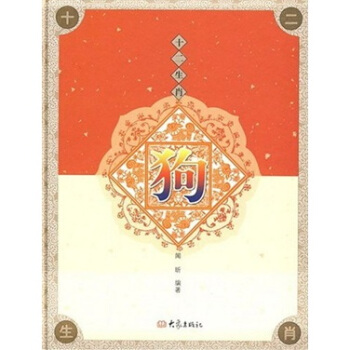
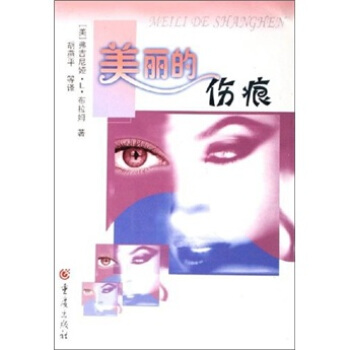
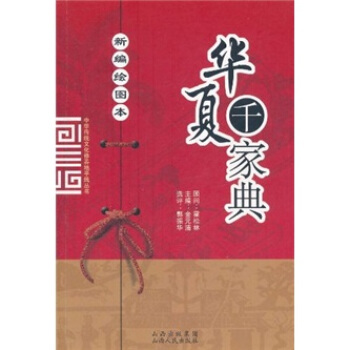
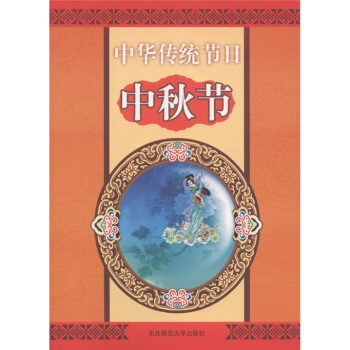
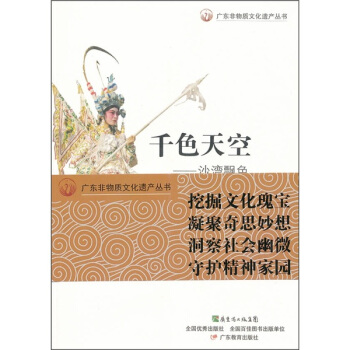
![江南文化研究:宋濂研究专辑(第5辑) [Jiangnan Culture Studies] pdf epub mobi 电子书 下载](https://pic.tinynews.org/10884606/830a34d4-17e9-44d4-a8f1-60a6d02d84e8.jpg)
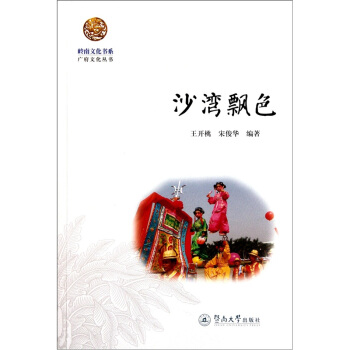
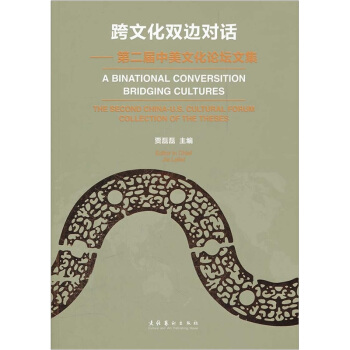
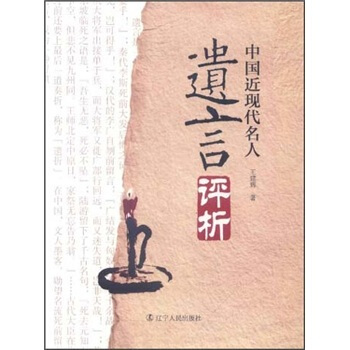
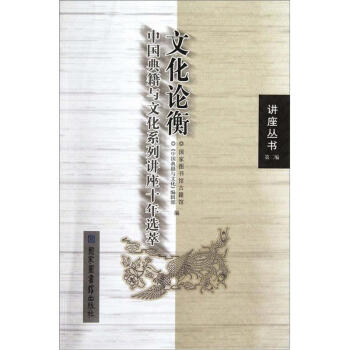
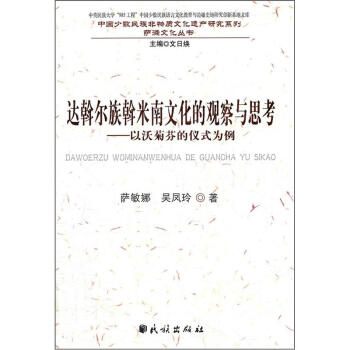
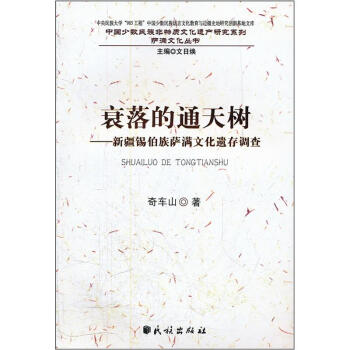
![文化建筑 [When Culture Meets Architecture] pdf epub mobi 电子书 下载](https://pic.tinynews.org/11064954/rBEHaFA19iEIAAAAAAEPjK5HKhMAAAHXAGQHkMAAQ-k214.jpg)
